Les Garçonnes Were Out in Full Force at the Exhibition Opening of “Gender Bending Fashion” at Boston’s MFA
Les Garçonnes Were Out in Full Force at the Exhibition Opening of “Gender Bending Fashion” at Boston’s MFA

The scene outside the museum.
Photo: Michael Blanchard
The show's curator, Michelle Finamore, and fashion designer Alessandro Trincone.
Photo: Michael Blanchard
Inside “Gender Bending Fashion.”
Photo: Michael Blanchard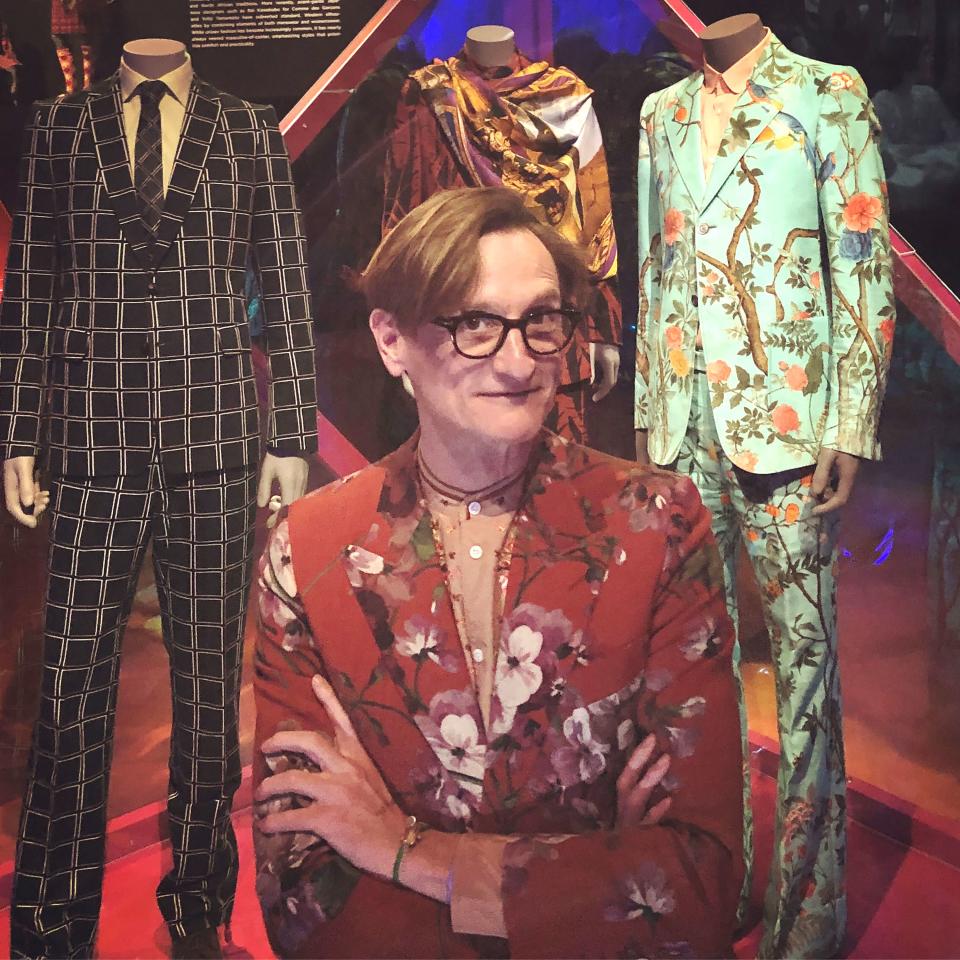
Vogue's Hamish Bowles in a Gucci suit. Beyond, his own Gucci suit, on display in the exhibition.
Photo: Hamish Bowles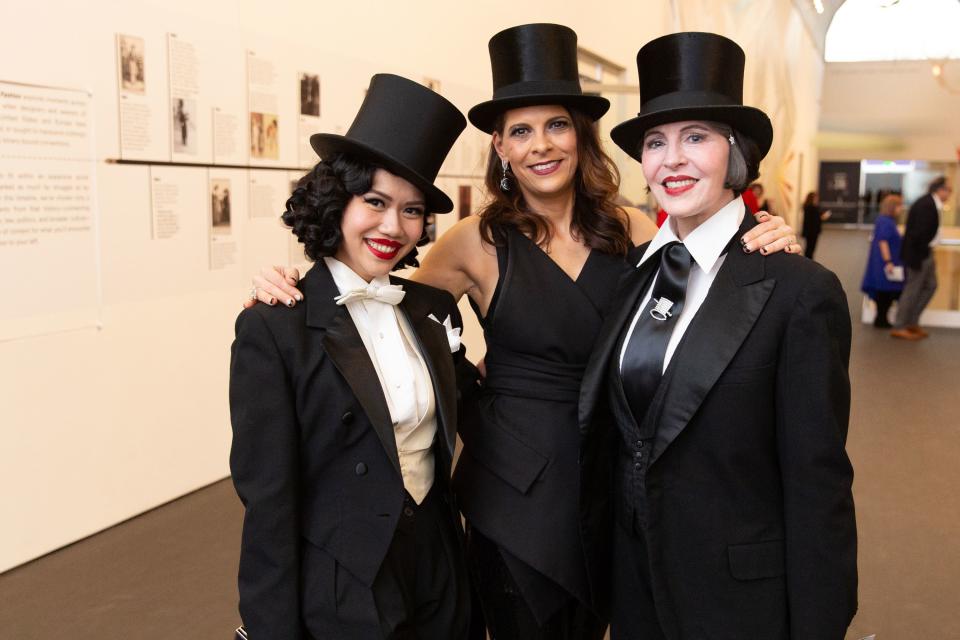
Raissa Bretaña, Michelle Finamore, and Gretchen Fenston Milliner.
Photo: Michael Blanchard
Marlene Dietrich’s white tie and tails look, created in 1930 by the great Hollywood studio designer Travis Banton.
Photo: Hamish Bowles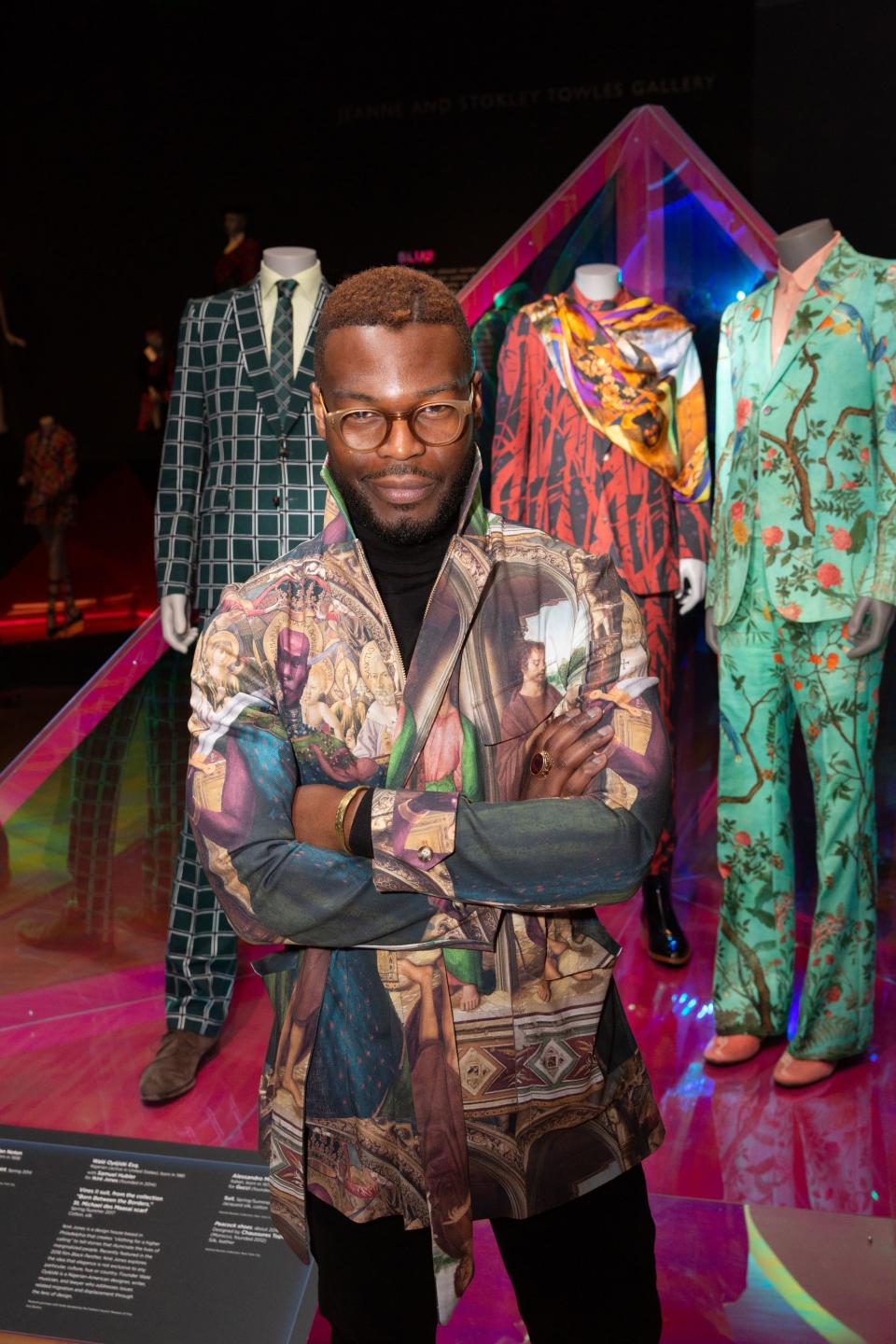
Walé Oyéjidé of Ikiré Jones poses in front of his design (middle).
Photo: Michael Blanchard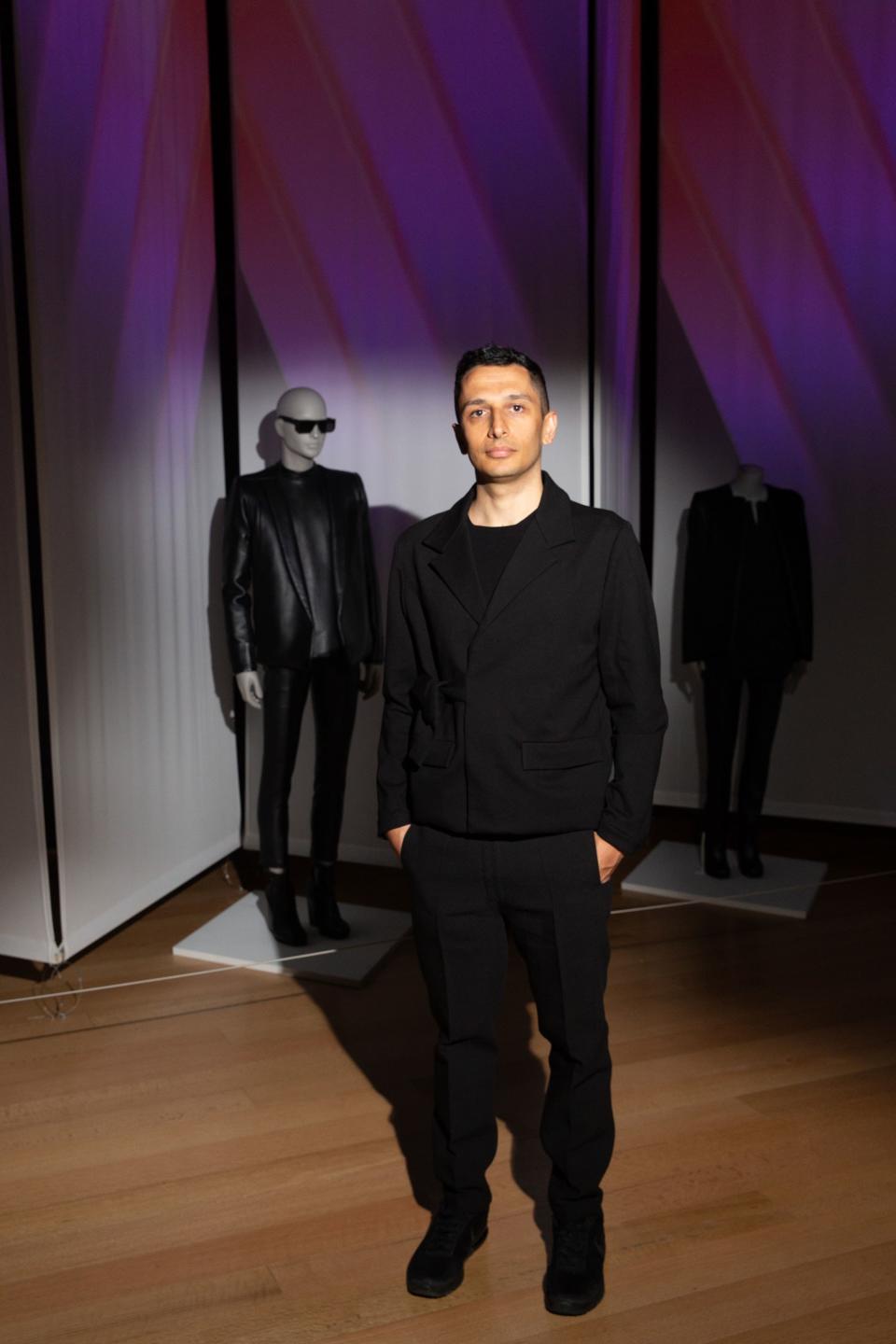
Rad Hourani poses with his work.
Photo: Michael Blanchard
Inside the exhibition.
Photo: Michael Blanchard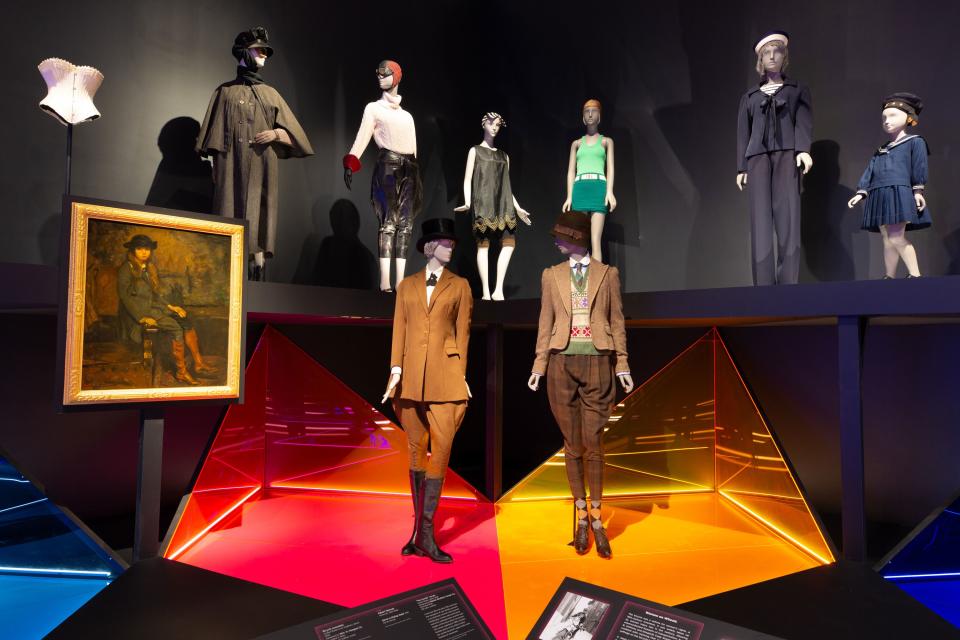
Looks on display in the exhibition.
Photo: Michael Blanchard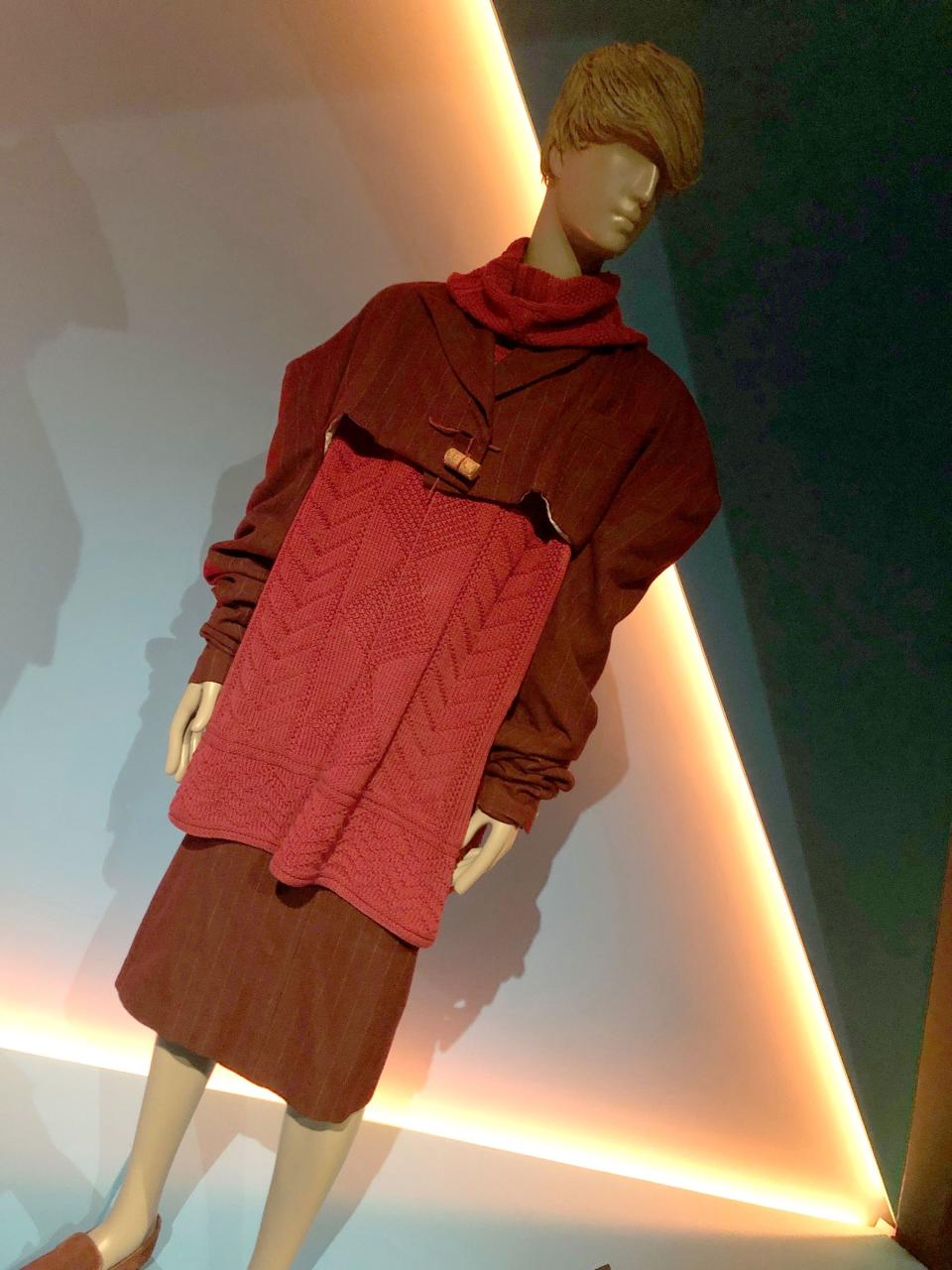
A look from John Galliano's Afghanistan Repudiates Western Ideals collection, lent by Vogue's Hamish Bowles.
Photo: Hamish Bowles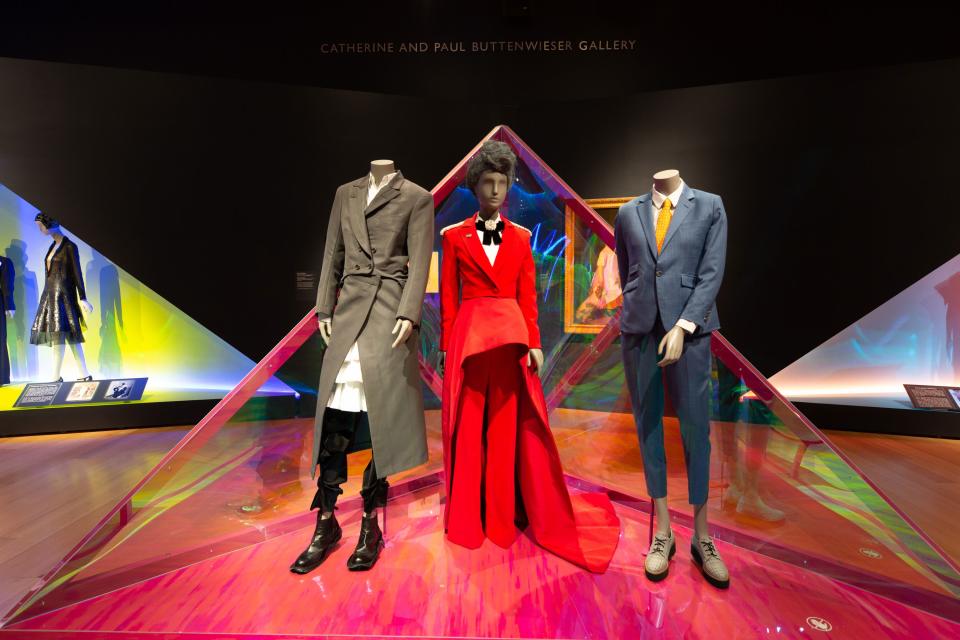
Looks on display in the exhibition.
Photo: Michael Blanchard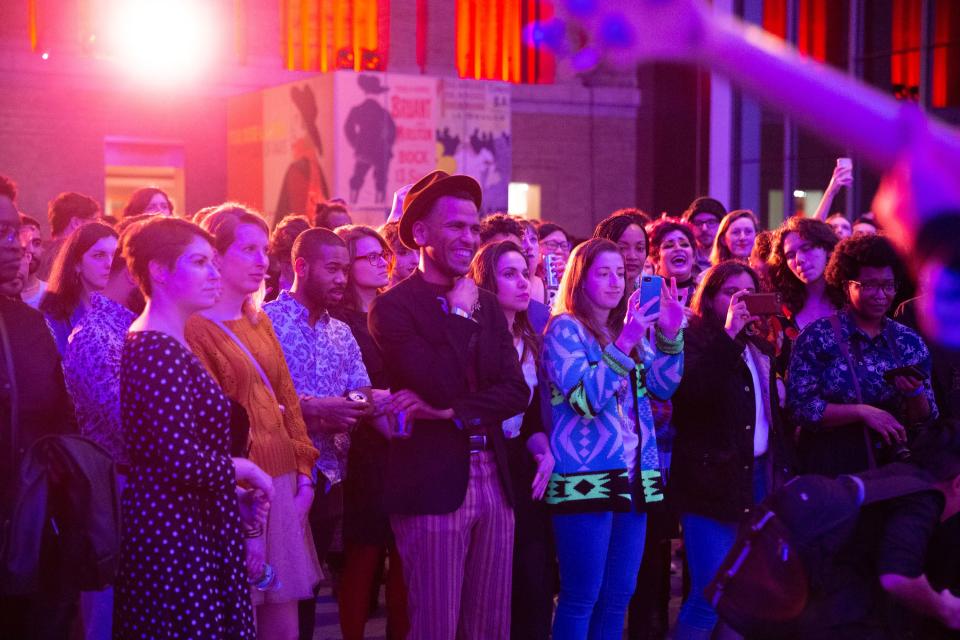
A crowd enjoys the evening's musical performances.
Photo: Michael BlanchardBack in 1984, John Galliano was cresting on the success of his Saint Martins degree show, which had been inspired by the incroyables—the male and female dandies who emerged during the French Revolution dressed in revolutionary garb that was, in its own way, just as extreme as the opulent ancien régime clothing that they were reacting against. For his first postgraduate collection, he took his cue from a 1920s cartoon in the satirical weekly magazine Punch entitled “Afghanistan Repudiates Western Ideals.”
The cartoon referred to a decree issued by King Amanullah Khan, who ruled Afghanistan from 1919 to 1929, that required his subjects to adopt Western dress, and depicted a fearsome Afghan warrior in traditional dress jumping on a bowler hat in apparent disgust at the notion. Galliano, of course, interpreted this in a free-form way and showed his collection in a static display at a trade fair and, later, in a Victorian studio off King's Road (he didn’t have the resources to stage a conventional fashion show). I loved the collection, and begged and borrowed and bought some pieces to wear to the Paris shows that season, including a vast hand-knit sweater trimmed with a cork and a cropped jacket with sleeves cut vastly too long so that they could be rouched up the arm. Galliano also made me a pin-striped burgundy wool pencil skirt to match, and the ensemble was a sensation at the Paris shows—and drove the city’s cabdrivers into a frenzy of sarcastic wolf whistling. Undaunted, I wore it on my first trip to New York soon after, where it created another succès fou in the Mike Todd Room at the Palladium and on the graffitied subway. Happy days!
So it was with great delight that I received a request from Michelle Finamore, the curator of fashion arts at the Museum of Fine Arts, Boston, to lend this lewk—together with a floral Gucci ensemble from Alessandro Michele’s Spring 2016 show and a bottle green windowpane Dries van Noten with matching tie—to her exhibition “Gender Bending Fashion”.
I took the leisurely train to Boston for the exhibition’s opening festivities on Friday to see what Finamore and her exhibition designer, Chelsea Garunay, and text guru, Adam Tessier, had cooked up. Quite a lot, as it happens, beginning with a timeline that introduced such astounding figures as Mary Edwards Walker, a Civil War surgeon who initially adopted Amelia Bloomer’s dress reform look of loose trousers worn under a short skirt before going for full traditional menswear. When told that she was wearing men’s clothes—something which occasionally landed her on the wrong side of the law—she answered, “I am not wearing men’s clothes; I am wearing my own clothes.” Brilliant. She cropped her hair short, too. “What a relief it is to be freed from chignon, extra braids, fizzes, rats, mice, combs, pins, etc., etc.,” she declared of her tonsorial chop.
Inside, Garunay’s dynamic installation framed the exhibits in diamond light lozenges. There were examples from iconic gender-fluid dressers, including Marlene Dietrich’s man-tailored white tie and tails and top hat look created for her in 1930 by the great Hollywood studio designer Travis Banton, along with David Bowie’s sharp-shouldered Ziggy Stardust suit in zigzag silver and lilac brocade by master tailor Freddie Burretti. There are examples of gender-fluid clothing by the innovative designer and LGBT rights activist Rudi Gernreich (whose archive resides at the Fashion Institute of Design & Merchandising in Los Angeles) and contemporary pieces by designers Alessandro Trincone, Rad Hourani, Palomo Spain, and shoemaker Thom Solo, among others. It was fun to again see Look 32 (a mannish suit jacket seemingly pulled down off the shoulders to reveal eight shirts layered beneath) from Viktor & Rolf’s stupendous Fall 2003 homage to Tilda Swinton, in which all the models had their hair and makeup done to resemble Tilda’s most androgynous self (the actress herself appeared in that show’s first look).
Finamore also explores areas where gender fluidity was more traditionally accepted—such as childrenswear. Little boys, right up until the turn of the century, for instance, were dressed in clothing indistinguishable from their sisters until they were “breeched” at the age of seven or so. Children’s sailor suits, meanwhile, were adopted by haute couture, with one particularly chic 1972 example from Yves Saint Laurent in the exhibition. Sportswear was another arena for progressive clothing, with riding outfits and a fascinating turn-of-the-century woman’s cycling outfit (lent by Historic New England, a local museum) that has culottes and a button-on front panel to give the illusion of a conventional skirt. (Photographer Ally Schmaling has also created a digital album of Boston-area scenesters with their own exhilarating, gender-nonspecific ideas about clothing.)
At the reception, I met the museum’s glamorous fashion council members Lynn Dale, Carroll Pierce, Nancy Adams, Elisa Fredrickson, and Penny Vinik—and discovered that the museum was an open house until two in the morning! MFA director Matthew Teitelbaum has made it his mission to democratize the institution, and this was but one of three such nights held throughout the year. As a result, the museum was thronged with young people—many espousing the theme of the show—circulating between food stations, a concert and dance floor in the vast modern atrium, and more intimate performances in smaller rooms nearby, not to mention a craft workshop and fashion installations and performances.
Very much fun, it would seem, was had by all.
